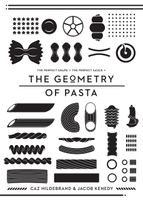Advertisement
Bucatini
By Caz Hildebrand and Jacob Kenedy
Published 2010

Their name stems from buco (hole), or bucato (pierced), and the hole has a specific function. A pasta with a large cross-section takes a long time to cook. Above a certain diameter (see bigoli and pici), the form would take so long to cook from dry that the outside would be overcooked before the middle was al dente. These forms are therefore always made fresh, so that the inside, already hydrated by the water the pasta was made with, takes less time to cook. Bucatini on the other hand are an industrial, die-extruded pasta (the modern equivalent of maccheroni inferrati), and the manufacture and distribution processes require that the product be dried before packaging. The ingenious solution is the fine hole that gives this pasta its name. Water enters as the pasta boils, reducing the cooking time to no longer than that of spaghetti. Long before the advent of the microwave, people were finding ways to cook their food from the inside out.



